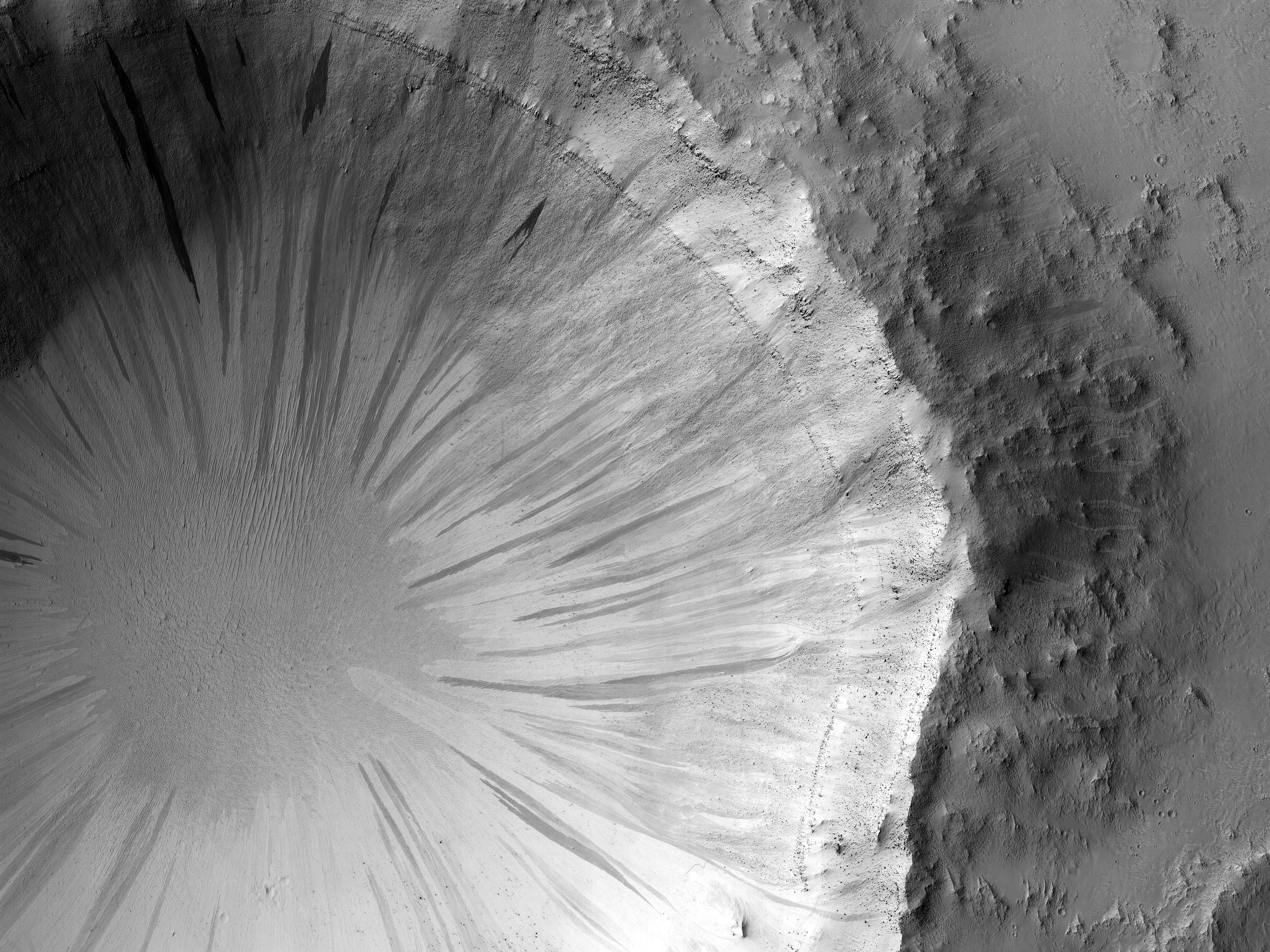This observation was originally intended to image the “contact” between two terrain types: a rocky ridge separates the rugged left from the smoother right side. But during planning, a targeting specialist chose to extend the image further north (to the top), to capture a nearby crater. (Extending images for some extra coverage is common practice when data volume allows.)
That extension has given us a bonus beauty!
The steep walls of the crater are covered with slope streaks formed by material falling down towards the crater’s center. There are so many in this case that the crater is reminiscent of a delicate “dandelion clock.” Looking closer, we can also see that the exposed layering gives us more information about the subsurface of Mars.
ID:
ESP_060857_1930date: 21 July 2019
altitude: 275 km
https://uahirise.org/hipod/ESP_060857_1930
NASA/JPL-Caltech/University of Arizona
#Mars #science #NASA
